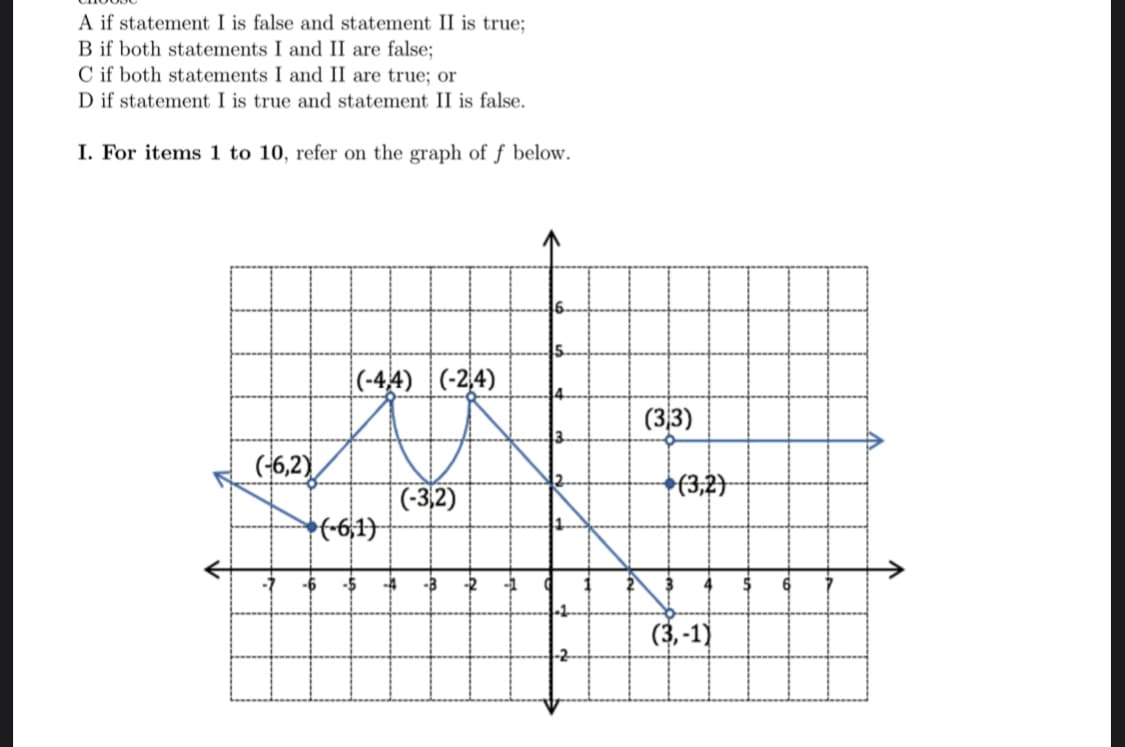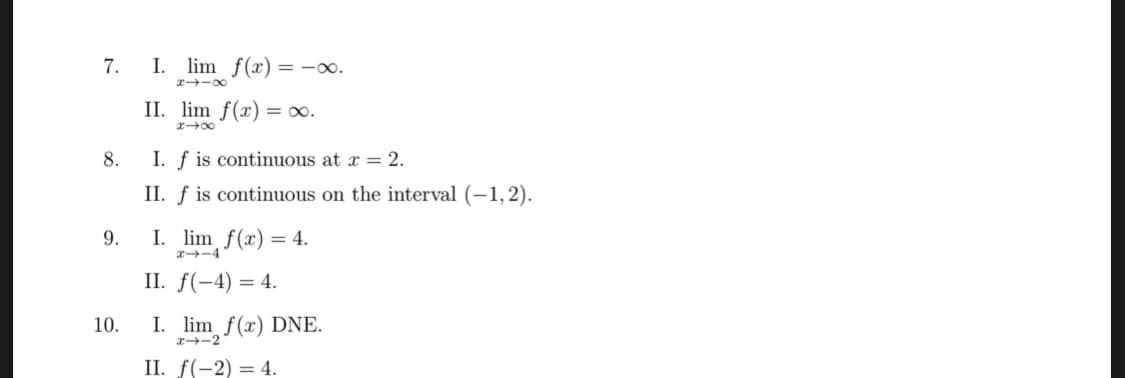A if statement I is false and statement II is true; B if both statements I and II are false; C if both statements I and II are true; or D if statement I is true and statement II is false. I. For items 1 to 10, refer on the graph of f below. (-6,2) -6 (-4,4) (-24) (-6,1) (-3,2) (3,3) (3,2) L (3,-1)
A if statement I is false and statement II is true; B if both statements I and II are false; C if both statements I and II are true; or D if statement I is true and statement II is false. I. For items 1 to 10, refer on the graph of f below. (-6,2) -6 (-4,4) (-24) (-6,1) (-3,2) (3,3) (3,2) L (3,-1)
Chapter3: Functions
Section3.3: Rates Of Change And Behavior Of Graphs
Problem 2SE: If a functionfis increasing on (a,b) and decreasing on (b,c) , then what can be said about the local...
Related questions
Question
9 and 10
Answers only

Transcribed Image Text:A if statement I is false and statement II is true;
B if both statements I and II are false;
C if both statements I and II are true; or
D if statement I is true and statement II is false.
I. For items 1 to 10, refer on the graph of f below.
(-6,2)
(-4,4) (-24)
(-6,1)
-5
(-3,2)
-B
(3,3)
(3,2)
(3,-1)

Transcribed Image Text:7.
8.
9.
10.
I. lim f(x) = -0.
8118
II. lim f(x) = ∞.
x-x
I. f is continuous at x = 2.
II. f is continuous on the interval (−1,2).
I. lim f(x) = 4.
x-4
II. f(-4)= 4.
I. lim f(x) DNE.
II. f(-2) = 4.
Expert Solution
This question has been solved!
Explore an expertly crafted, step-by-step solution for a thorough understanding of key concepts.
Step by step
Solved in 4 steps with 1 images

Recommended textbooks for you

